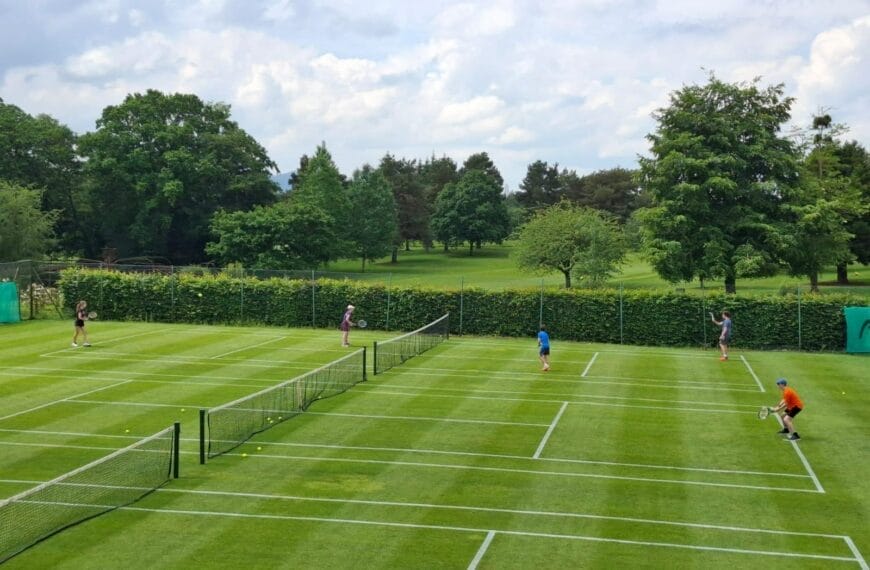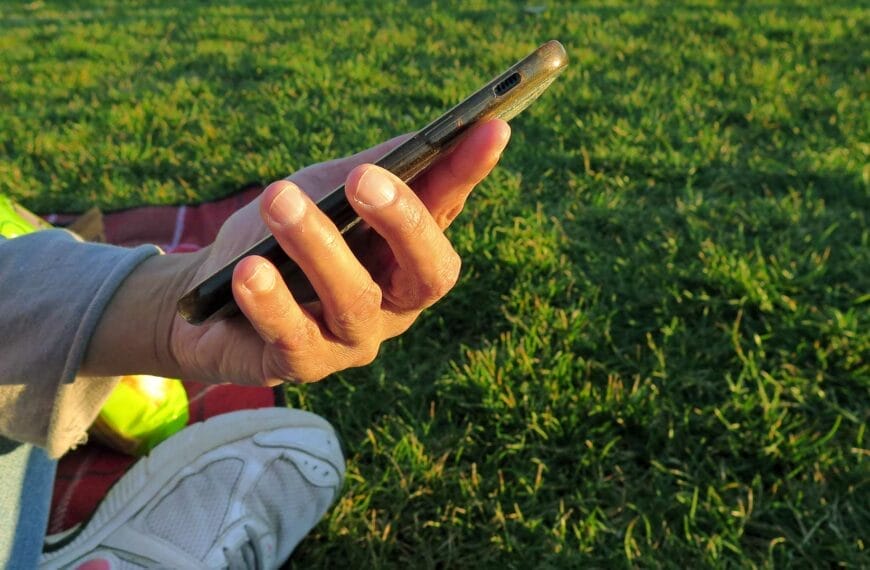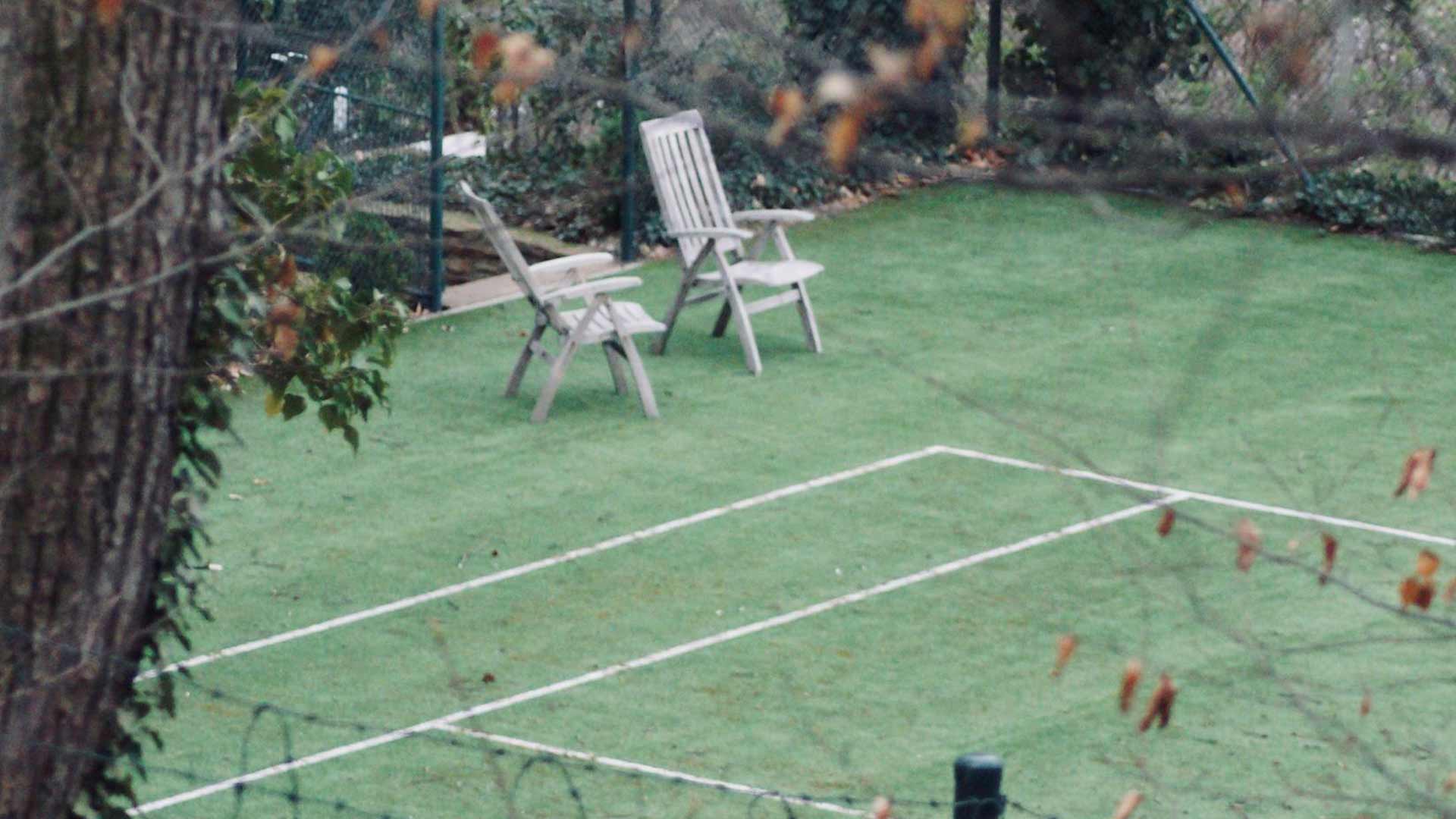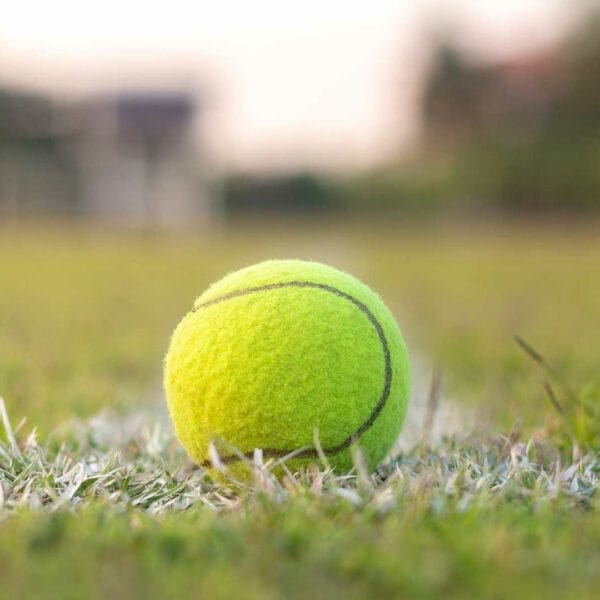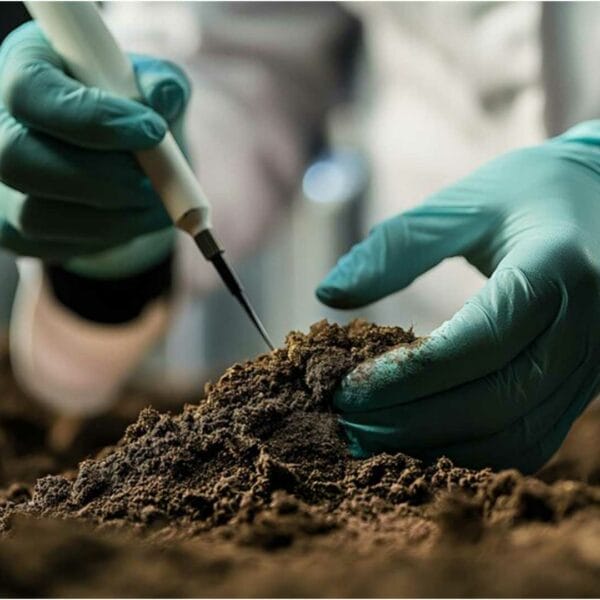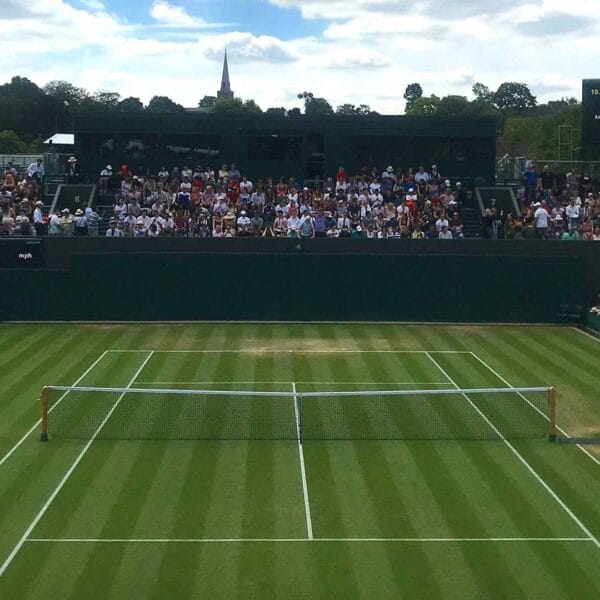How do you budget for seasonal repairs for a grass tennis court?
Introduction to Seasonal Repairs for Grass Tennis Courts
Seasonal repairs are essential to maintaining a well-manicured and safe grass tennis court. As the seasons change, various environmental factors can impact the condition of the court, leading to costly repairs if left unaddressed. Understanding the importance of seasonal repairs is crucial for tennis clubs, schools, and private homeowners who rely on their courts for recreational activities.
Grass tennis courts require regular maintenance to ensure optimal playing conditions throughout the year. The changing weather patterns, heavy foot traffic, and wear and tear from frequent use can cause damage to the surface, drainage systems, and surrounding infrastructure. Failure to address these issues promptly can result in more extensive and expensive repairs down the line.
Effective budgeting for seasonal repairs involves considering several key factors, including the age and usage of the court, local climate conditions, and the type of grass used. By understanding these variables, facility managers and owners can develop a comprehensive plan to allocate resources for routine maintenance tasks, emergency repairs, and long-term investments in preventative measures.
In this guide, we will explore the essential steps involved in budgeting for seasonal repairs on grass tennis courts, providing valuable insights into managing costs, prioritizing repairs, and making informed decisions to extend the lifespan of your court. Whether you’re a seasoned tennis enthusiast or a newcomer to the world of grass tennis courts, this information will help you navigate the complexities of seasonal repair budgets and keep your court in top condition all year round.
Identifying Common Seasonal Issues Affecting Grass Tennis Courts
As the seasons change, various environmental factors can significantly impact the condition of your grass tennis court. It’s essential to be aware of common seasonal issues that may arise, allowing you to take proactive measures to prevent costly repairs and maintain optimal playing conditions.
One of the primary concerns during spring is the re-growth of grass after winter dormancy. This period often brings increased moisture, which can lead to uneven growth, patchy areas, and potential waterlogging issues. To mitigate these problems, consider implementing a pre-season renovation program, including aerating, topdressing, and overseeding the court.
Summer months typically bring intense sunlight, heat stress, and drought conditions, causing the grass to become parched and discoloured. Inadequate irrigation systems or inefficient watering practices can exacerbate these issues, resulting in dead spots and uneven surfaces. Regularly inspecting your irrigation system and adjusting watering schedules accordingly can help prevent these problems.
Autumn brings cooler temperatures but also increased rainfall, which can lead to soil compaction and erosion. Heavy foot traffic during peak season can further exacerbate these issues, compromising the court’s drainage and overall structure. Implementing strategies such as drainage improvements, soil stabilization, and regular aeration can help alleviate these concerns.
Winter months often bring freezing temperatures, snow, and ice, which can severely damage the court’s surface and underlying infrastructure. Prolonged exposure to cold temperatures can cause the grass to die back, while snow and ice can lead to structural damage and safety hazards. Developing a winter maintenance plan, including snow removal, de-icing procedures, and post-winter renovations, is crucial for preserving the integrity of your court.
In addition to these seasonal-specific issues, other common problems affecting grass tennis courts include:
– Weed infestations and invasive species
– Soil nutrient deficiencies and pH imbalances
– Compacted soil and poor drainage
– Fungal diseases and pests
– Aging and worn-out court surfaces
By recognizing these common seasonal issues and taking proactive measures to address them, you can extend the lifespan of your grass tennis court, reduce maintenance costs, and ensure a safe and enjoyable playing experience for users.
Assessing the Condition of Your Court Before Budgeting
Before creating a budget for seasonal repairs, it’s essential to assess the current condition of your grass tennis court. This involves conducting a thorough inspection to identify existing issues, evaluate the court’s overall health, and determine the extent of necessary repairs. By understanding the court’s condition, you’ll be able to prioritize repairs, allocate funds effectively, and make informed decisions about long-term investments.
Start by evaluating the court’s surface, looking for signs of wear and tear, such as:
– Cracks and fissures in the surface
– Uneven or spongy areas
– Dead spots or bare patches
– Discoloration or discarding of the grass
Next, examine the court’s drainage and irrigation systems to ensure they’re functioning correctly. Check for:
– Waterlogging or puddling issues
– Leaks or damaged pipes
– Inefficient sprinkler heads or clogged nozzles
Additionally, inspect the court’s surrounding areas, including the fencing, netting, and surrounding landscaping. Look for signs of damage, wear, or neglect.
Consider hiring a professional to conduct a detailed assessment of your court’s condition. They can provide valuable insights into the court’s structural integrity, recommend necessary repairs, and offer guidance on preventative maintenance strategies.
Some key metrics to consider when assessing your court’s condition include:
– The age and remaining lifespan of the court’s surface
– The frequency and intensity of usage
– The effectiveness of existing maintenance practices
– Any previous repairs or renovations made to the court
Gathering this information will better equip you to create a realistic budget for seasonal repairs, prioritize necessary work, and make informed decisions about long-term investments in your grass tennis court.
Determining Repair Priorities Based on Usage and Age
When assessing the condition of your grass tennis court, consider its usage patterns and age to determine repair priorities. This will enable you to allocate resources efficiently, address critical issues first, and extend the court’s lifespan.
Usage-based prioritization involves evaluating how frequently and intensely your court is used. Factors to consider include:
– Peak usage periods: Identify times of year when your court experiences the most activity, such as summer months or during local tournaments.
– User demographics: Consider the types of users, their skill levels, and playing styles to understand the impact on your court’s surface.
– Maintenance schedules: Review your regular maintenance routines to ensure they align with usage patterns and address potential issues before they become major problems.
Age-based prioritization focuses on the court’s surface and underlying infrastructure. As courts age, they require more frequent repairs and replacements. Key considerations include:
– Surface type: Different surfaces have varying lifespans, with some lasting longer than others.
– Infrastructure age: To anticipate potential failures, evaluate the age of your court’s drainage, irrigation, and other underlying systems.
– Previous repairs: Document past repairs and renovations to gauge the court’s overall condition and identify recurring issues.
By combining these factors, you can develop a comprehensive plan to address critical repairs, extend the life of your court, and optimize resource allocation. For instance, if your court is heavily used during peak seasons but has an ageing surface, you may need to prioritize surface repairs over other maintenance tasks.
To further refine your approach, consider the following metrics:
– Average annual usage hours
– Number of players per hour
– Frequency of maintenance activities
– Remaining lifespan of the court’s surface and infrastructure
By analyzing these metrics alongside your court’s usage patterns and age, you’ll be well-equipped to determine repair priorities, allocate resources effectively, and make informed decisions about long-term investments in your grass tennis court.
Calculating Costs for Regular Maintenance Tasks
Regular maintenance tasks are essential to extending the lifespan of your grass tennis court and preventing costly repairs down the line. To create an accurate budget, you must calculate the costs associated with routine upkeep, including materials, labour, and equipment expenses.
Start by identifying the necessary maintenance tasks, which typically include:
Mowing and edging: Mow your court regularly to maintain a consistent height and edge around lines, logos, and other features to prevent damage.
– Watering and irrigation: Ensure proper watering schedules and inspect irrigation systems to prevent leaks and malfunctions.
– Fertilization and pest control: Apply fertilizers and pesticides as needed to promote healthy turf growth and prevent pests that can damage your court.
– Drainage system maintenance: Clear debris from drains and inspect pipes to prevent clogs and water accumulation.
– Line painting and resurfacing: Regularly repaint lines and resurface your court to maintain visibility and playability.
To estimate costs, research prices for materials and services in your area. Consider the following factors:
– Material costs: Calculate the cost of fertilizers, pesticides, paints, and other supplies required for maintenance tasks.
– Labor costs: Determine the time and expense required for manual labour, such as mowing, edging, and cleaning.
– Equipment rental or purchase: Decide whether to rent or buy specialized equipment, such as lawnmowers or aerators, to perform maintenance tasks.
Service contracts: Explore options for hiring professionals to handle specific tasks, such as line painting or irrigation system maintenance.
Create a detailed breakdown of estimated costs for each task, considering both one-time expenses and ongoing expenses. This will help you establish a realistic budget for regular maintenance tasks and ensure you’re prepared for seasonal repairs.
Some common costs to consider include:
– Fertilizer and pesticide applications: $500-$2,000 annually
– Lawn mower and equipment maintenance: $200-$1,000 annually
– Irrigation system maintenance: $300-$1,500 annually
– Line painting and resurfacing: $1,000-$5,000 every 2-5 years
– Drainage system maintenance: $100-$500 annually
By accurately calculating costs for regular maintenance tasks, you’ll be better equipped to budget for seasonal repairs and make informed decisions about long-term investments in your grass tennis court.
Budgeting for Emergency Repairs and Unexpected Expenses
In addition to regular maintenance tasks, it’s crucial to allocate funds for emergency repairs and unexpected expenses that may arise throughout the year. If not accounted for, these unforeseen events can quickly deplete your budget, so it’s essential to have a plan in place to cover these costs.
Emergency repairs often involve sudden issues that require immediate attention, such as:
– Sudden drainage problems due to heavy rainfall or flooding
– Pests or diseases affecting the health of your turf
– Equipment failure or malfunction during critical periods
– Accidental damage caused by users or external factors
To prepare for these situations, set aside a portion of your annual budget specifically for emergency repairs. This fund should cover the costs of:
– Quick fixes or temporary solutions to mitigate damage
– Emergency equipment rentals or purchases
– Professional services for urgent repairs or assessments
– Contingency planning for potential future issues
When allocating funds for emergency repairs, consider the following factors:
– Historical data on past repair costs and frequency
– The age and condition of your court’s infrastructure
– Local weather patterns and their impact on your court
– User behaviour and potential risks associated with heavy usage
A general rule of thumb is to reserve 10-20% of your annual budget for emergency repairs and unexpected expenses. However, this percentage may vary depending on your specific situation and the level of risk involved.
It’s also essential to review and update your emergency fund regularly to ensure it remains adequate and aligned with changing circumstances. By prioritizing emergency repairs and unexpected expenses, you’ll be better equipped to manage seasonal repair costs and minimize financial surprises throughout the year.
Considering Long-Term Investment in Preventative Measures
In addition to addressing immediate repair needs, investing in preventative measures can significantly reduce the likelihood and cost of seasonal repairs over time. Proactive strategies focus on maintaining the overall health and integrity of your grass tennis court, thereby minimizing the need for costly repairs.
Preventative measures can include:
– Regular aeration and dethatching to promote healthy drainage and root growth
– Fertilization and pest control programs tailored to your local climate and soil conditions
– Irrigation system upgrades to optimize water efficiency and prevent overwatering
– Surface renovations, such as resurfacing or re-turfing, to extend the lifespan of your court
– Equipment maintenance and storage to prevent wear and tear
By incorporating these preventative measures into your budget, you can enjoy several benefits, including:
– Reduced repair costs through proactive maintenance
– Improved court performance and playability
– Increased durability and longevity of your court’s surface and infrastructure
– Enhanced user experience and satisfaction
– Better alignment with long-term goals and objectives for your facility
To determine which preventative measures are most suitable for your grass tennis court, consider factors such as:
– Your court’s age, condition, and usage patterns
– Local climate and environmental conditions
– Available resources and budget constraints
– Prioritized goals and objectives for your facility
A well-planned investment in preventative measures can yield significant returns in terms of reduced repair costs, improved court performance, and enhanced user experience. By prioritizing proactive maintenance and upkeep, you’ll be better positioned to manage seasonal repair costs and maintain a high-quality playing surface for years to come.
Allocating Funds for Equipment Replacement and Upgrades
As a grass tennis court owner or manager, you must allocate funds for equipment replacement and upgrades to ensure optimal court performance and user experience. Regularly updating your equipment can help prevent breakdowns, improve maintenance efficiency, and reduce repair costs.
Key areas to consider when allocating funds for equipment replacement and upgrades include:
1. Mowing and edging machines: Investing in high-quality mowers and edgers can help maintain a professional-looking court surface and reduce the risk of damage caused by uneven cutting.
2. Watering systems: Upgrading irrigation systems can optimize water efficiency, prevent overwatering, and minimize the risk of water-related damage to the court surface.
3. Drainage equipment: Ensuring proper drainage is crucial for maintaining a healthy court surface. Replacing outdated drainage equipment can help prevent water accumulation and reduce the risk of costly repairs.
4. Netting and fencing: Regularly inspecting and replacing netting and fencing can help maintain court safety and prevent damage caused by worn-out or damaged equipment.
5. Storage solutions: Investing in durable storage solutions can help protect equipment from weather damage, theft, and wear and tear, reducing the need for frequent replacements.
When allocating funds for equipment replacement and upgrades, consider the following factors:
1. Equipment age and condition: Regularly assess the condition of your equipment to identify areas that require replacement or upgrade.
2. Usage patterns: Consider the frequency and intensity of use to determine which equipment requires more frequent replacement or upgrade.
3. Budget constraints: Allocate funds based on available resources and prioritize essential equipment replacement and upgrades.
4. Long-term goals: Invest in equipment that aligns with your long-term goals for the facility, such as improving sustainability or enhancing user experience.
By allocating sufficient funds for equipment replacement and upgrades, you can maintain a well-maintained court surface, reduce repair costs, and enhance user experience. This proactive approach will also help you stay ahead of potential issues and ensure a smooth operation throughout the season.
Strategies for Managing Seasonal Repair Costs Over Time
Managing seasonal repair costs for a grass tennis court requires careful planning, effective budgeting, and a proactive approach to maintenance. By implementing strategies to mitigate expenses and optimize resource allocation, you can ensure a smooth operation throughout the season while minimizing financial burdens.
One key strategy is to establish a regular maintenance schedule, which includes routine inspections, preventative measures, and timely repairs. This approach helps identify potential issues before they escalate into major problems, reducing the likelihood of costly emergency repairs.
Another effective strategy is to implement a phased budgeting plan, where funds are allocated across different seasons or years to spread out repair costs. This allows you to prioritize essential repairs and upgrades while still making progress towards long-term goals.
Additionally, investing in energy-efficient and sustainable equipment can lead to significant cost savings over time. For example, upgrading to LED lighting or solar-powered irrigation systems can reduce energy consumption and lower utility bills.
Regular communication with contractors, suppliers, and other stakeholders is also crucial for managing seasonal repair costs. Building strong relationships and negotiating favourable contracts can help you access better pricing, priority service, and expert advice.
Furthermore, considering alternative financing options, such as loans or grants, can provide additional funding for critical repairs and upgrades. Researching local and national programs can help you tap into these resources and supplement your budget.
Lastly, maintaining accurate records and tracking historical repair data can inform future budgeting decisions and help you anticipate upcoming expenses. By analyzing past trends and identifying areas for improvement, you can refine your budgeting strategy and make more informed decisions about allocating resources.
By adopting these strategies, you can effectively manage seasonal repair costs, maintain a well-maintained court surface, and ensure a positive user experience for players and spectators alike.
Conclusion: Effective Budgeting for Seasonal Repairs on Grass Tennis Courts
In conclusion, effective budgeting for seasonal repairs on grass tennis courts requires a comprehensive approach that considers various factors, including common issues affecting the court’s condition, regular maintenance tasks, emergency repairs, preventative measures, equipment replacement, and long-term investment strategies. By identifying potential problems, assessing the court’s condition, determining repair priorities, calculating costs, and allocating funds accordingly, facility managers can ensure their grass tennis courts remain safe, playable, and well-maintained throughout the seasons. Ultimately, a well-planned budget will help minimize unexpected expenses, reduce downtime, and maximize the lifespan of the court, providing an optimal playing experience for users while also protecting the investment made in the facility.



